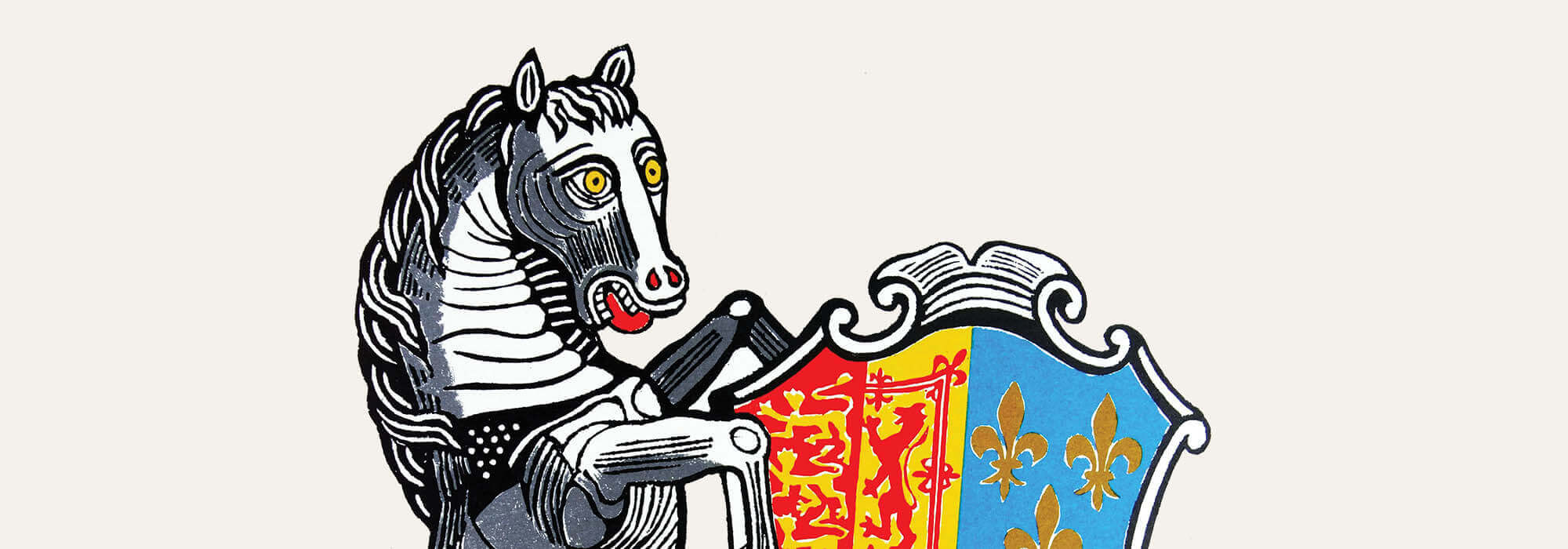
With the death of the last of the Stuarts, Queen Anne, in 1714, the British throne passed to George of Hanover, who became known as George I. He brought with him the heraldry of the region, including a White Horse on a red background, known in German as the ‘Sachsenross’ and in English as ‘the White Horse of Hanover.’
A Significant Symbol
While the horse is a relatively small part of George I’s Royal Arms, it held important significance. As well as appearing on all military uniforms of the period, the white horse also featured on royal badges of office and was central to the insignia of the Order of the Bath and the Hanoverian Guelphic Order. And if you’ve ever wondered why there are so many establishments called ‘The White Horse’, it’s due to a tradition in Britain of naming public houses after symbols in heraldic badges – the perfect expression of loyalty to the new ruling dynasty.
Centuries of Heritage
At Her Late Majesty The Queen’s coronation, the sculpture of the symbolic White Horse of Hanover carried the Royal Arms of George I. It represented centuries of royal bloodlines, with the three lions of England and the lion of Scotland in the first quarter, the fleur-de-lis of France in the second, and the Irish harp in the third quarter; the fourth quarter shows the Arms for Hanover. Although the White Horse of Hanover passed out of the Royal Arms in 1837, it remains a device evocative of the history of the Hanoverian family, ancestors of Queen Elizabeth II.
The White Horse in Mythology and Heraldry
Throughout history, white horses have appeared in the mythology of cultures around the world and were considered to be sacred animals as early as 486 BC. Seen as spirited and powerful beasts, they are often associated with wisdom and strength. In heraldry, the horse is traditionally a symbol of speed, intellect and virility. The first documented use of the white horse in heraldry comes from the seal of Albert I, Duke of Brunswick-Grubenhaben in 1361. Albert I was a member of the Guelph family, which provided many German monarchs, princes and dukes from the eleventh century onwards.
The white horse is also a familiar symbol in Kent, as it is sometimes said the horse was first brought to the county by Saxon hordes. The Kentish white horse is always depicted ‘rampant’ or rearing but the White Horse of Hanover is shown at full gallop.
You can view Jody Clark’s modern interpretation of the White Horse of Hanover on the latest coins in The Queen’s Beasts Collection.
Discover great stories from history and how we're celebrating these moments within The Royal Mint
Read more
